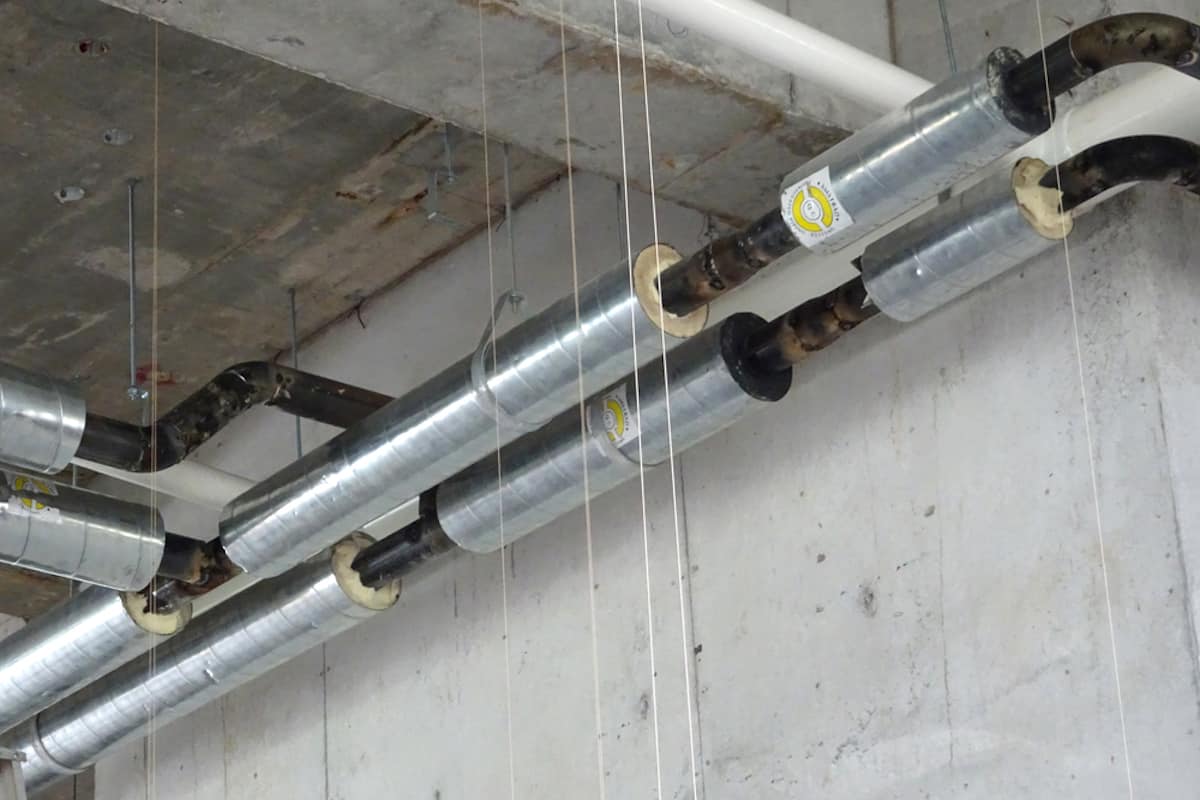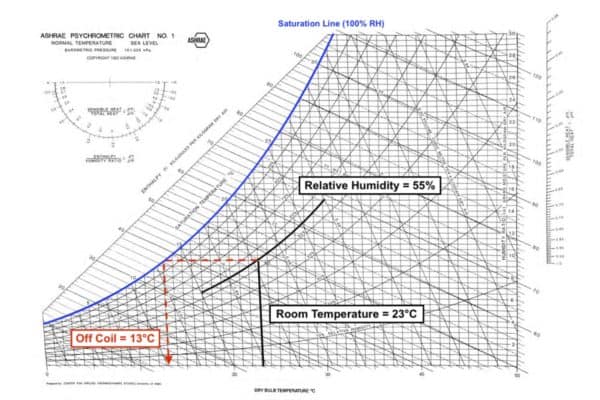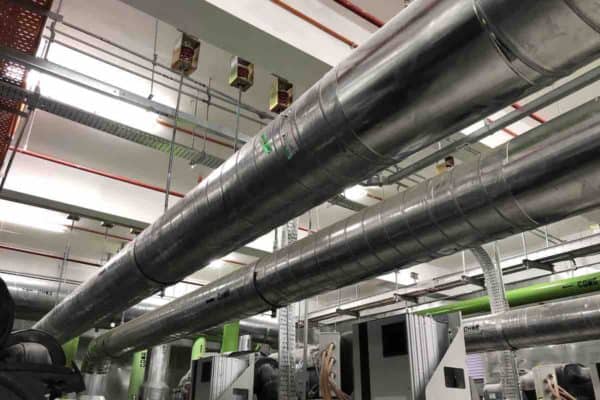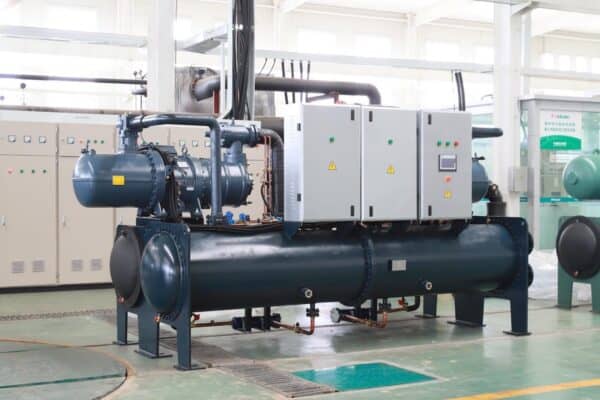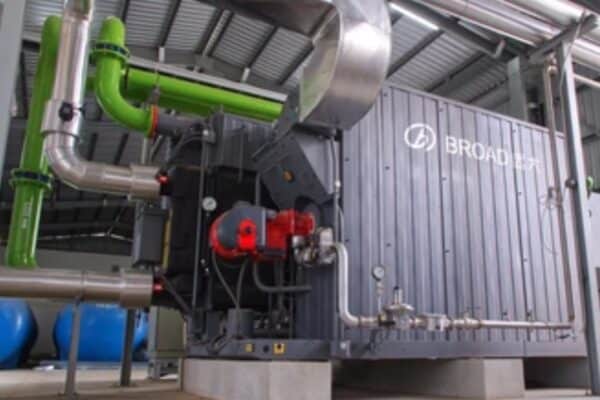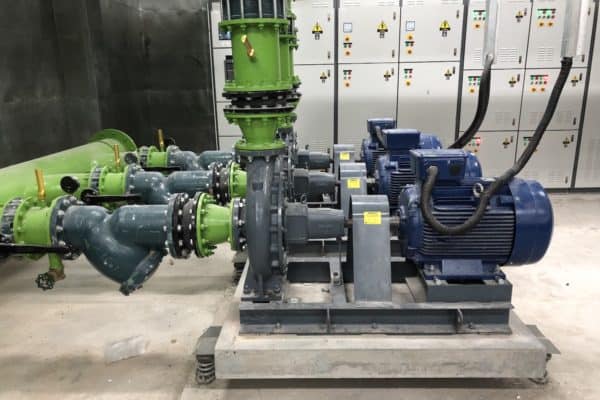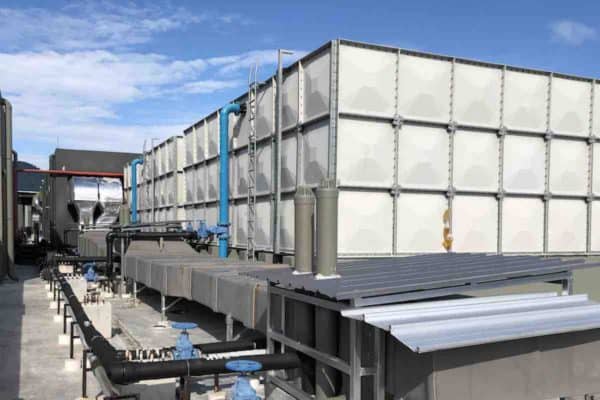Chilled Water Pipe Insulation Thickness: Chart & Calculation
Chilled water pipes must be insulated to prevent condensation as well as conserve energy. Many junior engineers don’t quite understand how the thickness of chilled water pipe insulation is determined. So, I decided to provide a complete guide on chilled water pipe insulation.
The most common type of insulation used for chilled water pipes is polyurethane foam. It has a very low thermal conductivity which allows the outer diameter of the chilled water pipes to be thinner. Chilled water pipes insulated with polyurethane foam are also stronger.
Other than polyurethane foam, chilled water pipes can also be insulated by other materials and different insulation materials result in different insulation thicknesses.
With that said, let’s take a closer look at the insulation thickness requirement for chilled water pipes that use polyurethane foam followed by other types of chilled water pipe insulations.
Chilled Water Pipe Insulation Thickness Factors
Chilled water pipes that are insulated using polyurethane (PU) foam are often known as pre-insulated chilled water pipes; the PU insulation is done at the factory.
Manufacturers of pre-insulated chilled water pipes have a standard PU insulation thickness for every chilled water pipe size and it is different for different pipe sizes.
There are several factors that affect the insulation thickness for chilled water pipes. So, let’s take a look at them to understand what’s their impact on the insulation thickness.
Dew Point
The thickness of the PU insulation for chilled water pipes varies based on the ambient air temperature and relative humidity. In other words, it is geographical-dependent.
In Malaysia, manufacturers of pre-insulated chilled water pipes often design the insulation thickness based on a temperature of 30°C (86°F) at 80% relative humidity. At such a design condition, the dew point is expected to be around 26.2°C (79.2°F).
Chilled water pipes are insulated primarily to prevent surface condensation. So, the insulation must be thick enough to prevent the pipe surface temperature from dropping below the dew point.
The higher the dew point, the thicker the insulation needs to be.
In hot and humid countries like Malaysia and Singapore, the insulation for chilled water pipes is inevitably thicker. Whereas in cold and dry places like Las Vegas in the United States, the insulation thickness requirement is relatively thinner.
Density
The thermal resistance of insulated chilled water pipes is affected by the density of the insulation material. Polyurethane (PU) has a thermal conductivity of 0.021 W/mK at 45 kg/m3 of density. If the density is increased to 60 kg/m3, the thermal conductivity is increased to 0.022 W/mK.
However, the effect of density increases is not much. Rather, the thermal resistance of insulated chilled water pipes is greatly dependent on the insulation material itself.
For instance, Rockwool has a thermal conductivity of 0.035 W/mK. So, if Rockwool is the insulation material for chilled water pipes, it needs to be slightly thicker.
For chilled water pipes, the density of the PU insulation is mostly at 45 kg/m3. Sometimes, people prefer to use 50 kg/m3 but the thermal resistance doesn’t change much. Needless to say, the higher the density, the higher the cost.
Chilled Water Pipe Insulation Thickness Chart
As mentioned earlier, most chilled water pipes are insulated with polyurethane (PU) foam. In Malaysia, the standard insulation thickness of PU-insulated chilled water pipes is around 30 mm to 50 mm depending on the size of the chilled water pipes.
Most of the time, we use the insulation thickness recommended by pre-insulated chilled water pipe manufacturers as they’ve done extensive research and calculations as well as provided guarantees on the insulation performance of their products.
However, we also follow the insulation thickness specified by HVAC consultants for other reasons such as meeting certain energy efficiency goals.
Nonetheless, they are more or less the same.
Recommended by Manufacturers
Below is an example of the PU insulation thickness recommended by pre-insulated chilled water pipe manufacturers in Malaysia for different chilled water pipe sizes based on 45 kg/m3 of density:
| Chilled Water Pipe Size | PU Insulation Thickness |
|---|---|
| 15 mm | 28.75 mm |
| 20 mm | 36.00 mm |
| 25 mm | 32.50 mm |
| 32 mm | 35.65 mm |
| 40 mm | 37.70 mm |
| 50 mm | 36.70 mm |
| 65 mm | 36.30 mm |
| 80 mm | 34.85 mm |
| 100 mm | 42.15 mm |
| 125 mm | 43.30 mm |
| 150 mm | 41.55 mm |
| 200 mm | 51.35 mm |
| 250 mm | 56.30 mm |
| 300 mm | 55.75 mm |
| 350 mm | 50.70 mm |
| 400 mm | 50.30 mm |
| 450 mm | 50.90 mm |
| 500 mm | 50.50 mm |
| 600 mm | 49.90 mm |
Different manufacturers may have different insulation thicknesses but they don’t deviate that much. Again, the insulation thickness varies based on geographical location.
Specified by Consultants
On the other hand, HVAC consultants or design engineers also have their “standard” PU insulation thicknesses that are based on calculations and past experiences.
Below is an example of the PU insulation thickness specified by HVAC consultants in Malaysia for different chilled water pipe sizes based on 50 kg/m3 density:
| Chilled Water Pipe Size | PU Insulation Thickness | PU Insulation Thickness (Outdoor) |
|---|---|---|
| 15 mm to 25 mm | 25 mm | 40 mm |
| 32 mm to 100 mm | 40 mm | 55 mm |
| 125 mm to 150 mm | 50 mm | 65 mm |
| 200 mm to 300 mm | 50 mm | 75 mm |
Again, different HVAC consultants may have different PU insulation thicknesses. However, they don’t deviate that much as well. And again, HVAC consultants may specify thicker insulation to achieve certain energy efficiency goals.
Recommended by ASHRAE
Meanwhile, ASHRAE also has its own recommended insulation thickness for chilled water pipes. However, we should read carefully and not blindly follow it because it may be based on the weather condition of the United States only.
For other regions of the world, we may need to do a separate calculation.
Below is the insulation thickness recommended by ASHRAE based on different humidity levels at a fixed 27°C of ambient temperature, not constrained to PU insulation only:
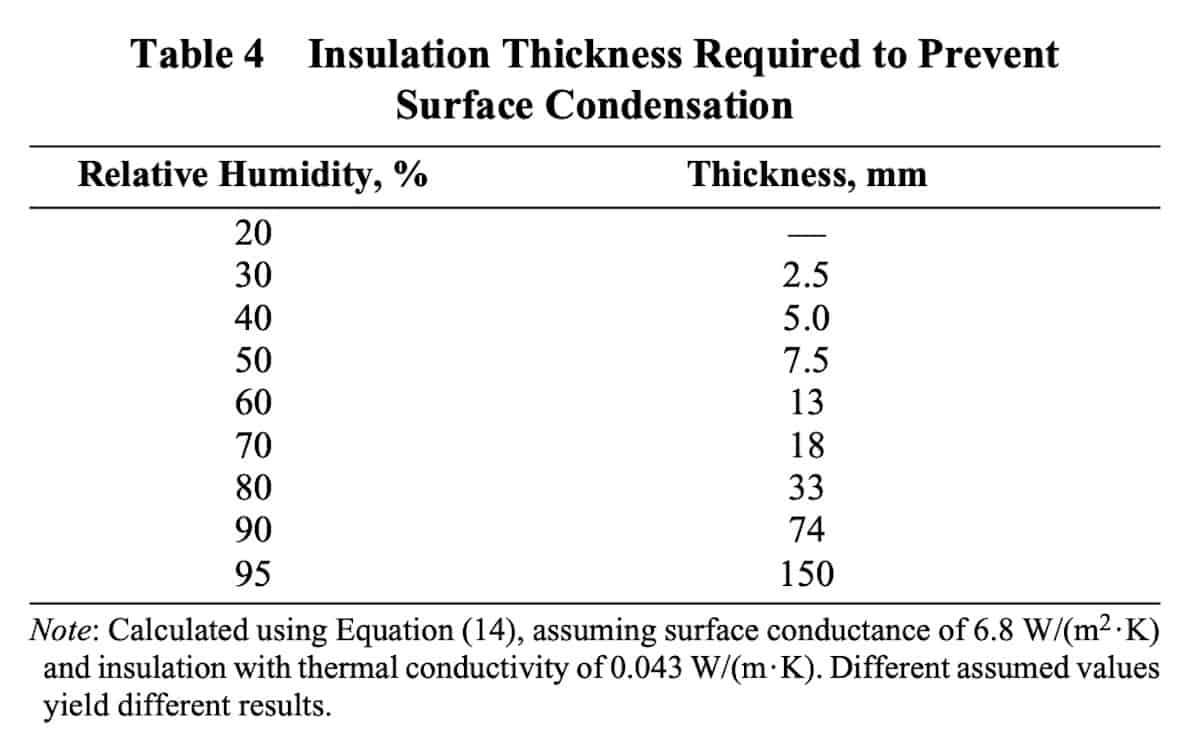
Take note that the above recommendation is based on insulations with thermal conductivity of 0.043 W/mK. Meanwhile, PU foams have a thermal conductivity of 0.021 W/mK. So, if you’re using PU as the insulation material, the insulation thickness can be lower.
Furthermore, ASHRAE provided their recommended insulation thickness based on energy efficiency considerations alone. For other considerations, a separate calculation may be required.
ASHRAE also recommended that at thermal conductivity between 0.032 W/mK and 0.040 W/mK, the minimum insulation thickness for pipe size 32 mm and below is 13 mm while the minimum insulation thickness for pipe size 40 mm and above is 25 mm only.
All and all, chilled water pipe insulation thickness is depending on working conditions such as the dew point, fluid temperature and others. To gain more insights, we can study the calculation of the insulation thickness for chilled water pipes.
On a side note, if you want to quickly learn about chilled water system, you can get my Chilled Water System (eBook). If you’re into design, you can enroll in my Chilled Water System Design Course where I teach you various design procedures with tons of examples.
Chilled Water System Design Course
Learn how to design a chilled water system with AHU/FCU selection, chiller sizing, cooling tower sizing, pump sizing, piping design, ductwork design and more.
Chilled Water Pipe Insulation Thickness Calculation
Recalling that the main objective of chilled water pipe insulation is mostly to prevent surface condensation. So, the surface temperature of chilled water pipes must not be equal or below the dew point.
With that said, there are a few parameters we need to establish first before we start to calculate the chilled water pipe insulation thickness using mathematical formulas.
I’ll be using a PU-insulated chilled water pipe for the calculation since it is the most common one.
Now, let’s visualize the section view of a PU-insulated chilled water pipe as follow:
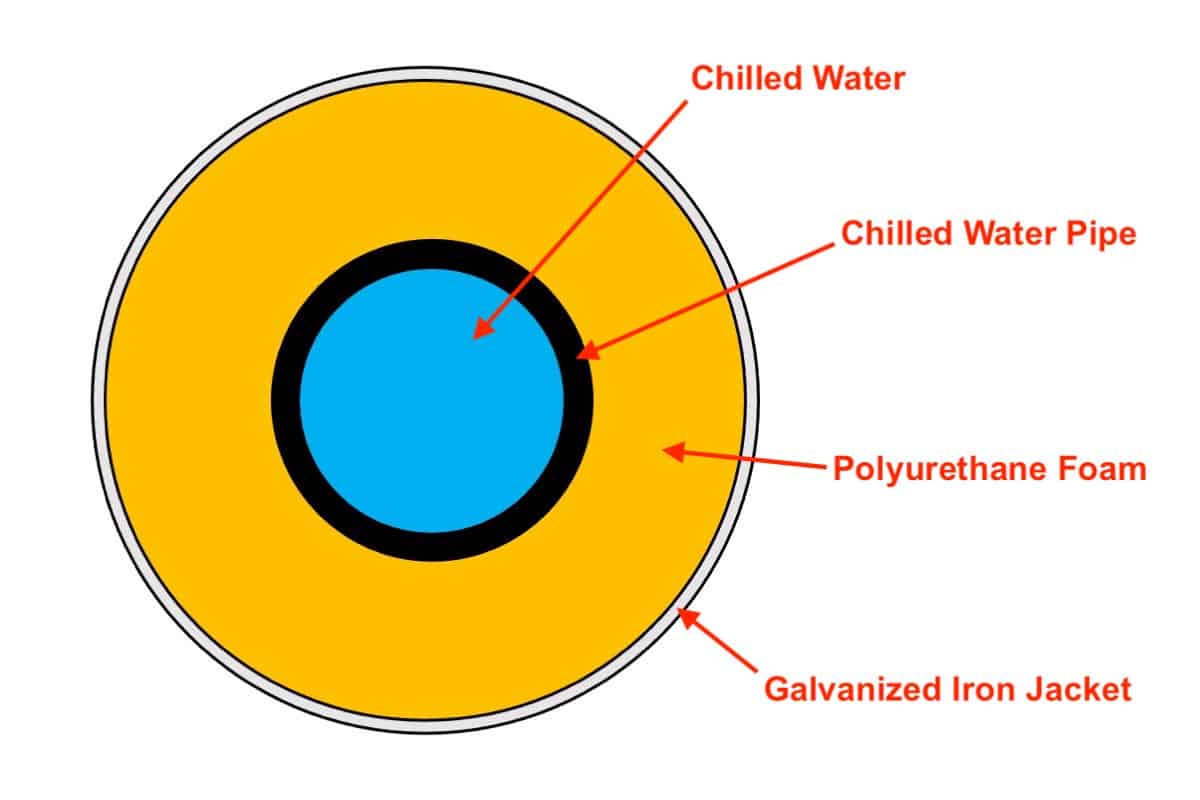
The first few parameters we need is the radius of the various layer of an insulated chilled water pipe. So, let’s label them as follow:
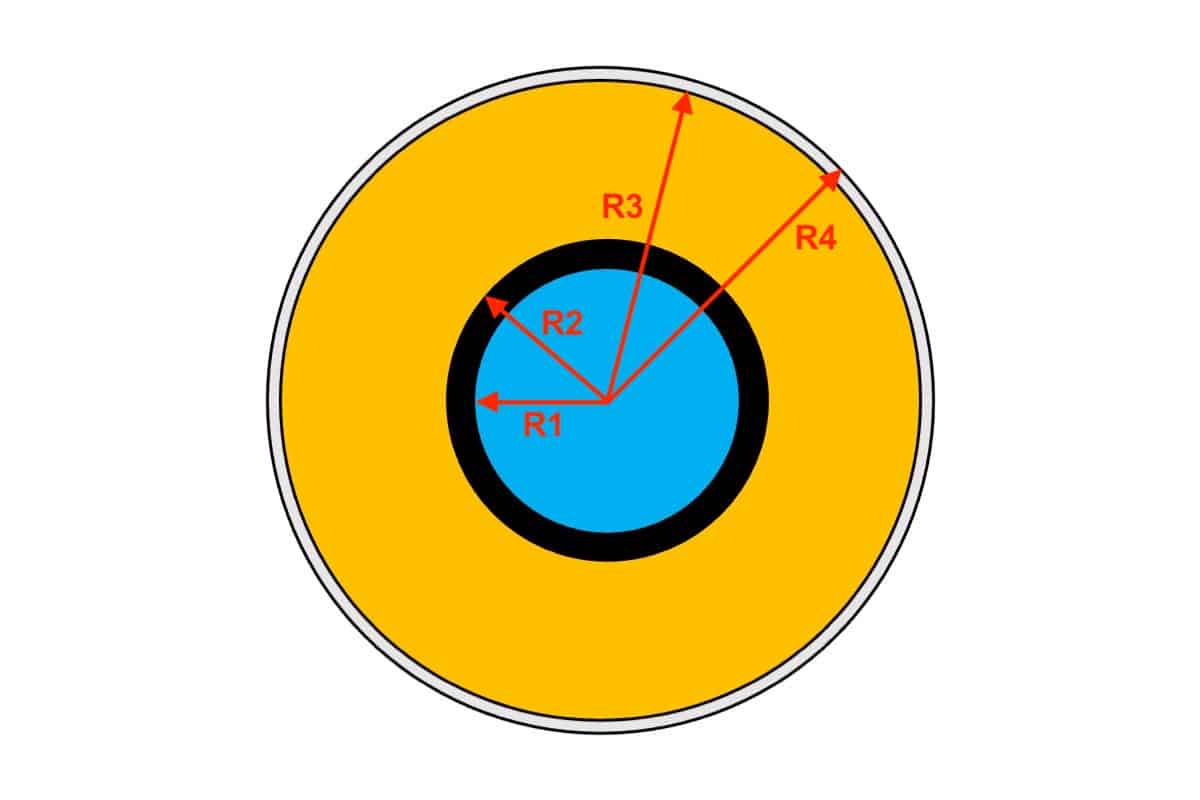
If you have done this before, you’ll know that some radiuses are negligible but for the first-timer, bear with me.
- R1 (r1)= inner radius of the chilled water pipe
- R2 (r2) = outer radius of the chilled water pipe
- R3 (r3) = inner radius of the jacket
- R4 (r4) = outer radius of the jacket
Assuming that we select a 50 mm pre-insulated chilled water pipe based on the manufacturer’s datasheet, the specification of the chilled water pipe can be as follow:
| Specification | Value |
|---|---|
| Nominal pipe size | 50 mm |
| Pipe outer diameter | 60.3 mm |
| Jacket size | 142 mm |
| Jacket thickness | 0.5 mm |
| Insulation thickness | 40.85 mm |
With the above, the four radiuses can be determined as follow:
| Radius | Value |
|---|---|
| r1 | 25 mm (0.025 m) |
| r2 | 30.15 mm (0.0301 m) |
| r3 | 70.75 mm (0.0707 m) |
| r4 | 71 mm (0.071 m) |
Subsequently, it’s tricky but we also need the following design parameters:
| Parameter | Typical Value |
|---|---|
| Thermal conductivity of PU, kPU | 0.021 W/mK |
| Thermal conductivity of carbon steel, kCS | 45 W/mK |
| Thermal conductivity of galvanized iron, kGI | 52 W/mK |
| Ambient air temperature, Tamb | 30°C (303.15 K) |
| Chilled water temperature, Tchw | 6.7°C (279.85 K) |
| Thermal coefficient of water, hwater | 2250 W/m2K |
| Thermal coefficient of air, hair | 10 W/m2K |
| Chilled water pipe length, L | 1 meter |
Polyurethane (PU) foams have a thermal conductivity of 0.021 W/mK. Next, we assume the air temperature surrounding the chilled water pipe to be at 30°C while the chilled water temperature is at the standard 6.7°C.
For the thermal coefficient of water and air, they are in a range but I’ll use 2250 W/m2K and 10 W/m2K based on my research. Finally, let’s work with 1 meter pipe length to ease up the calculation process.
To convert from IP to SI unit, use my HVAC Online Unit Converter.
Now that we have all the required parameters. It’s time to do the calculation. Following is a step-by-step process to calculate the insulation thickness for chilled water pipes:
1. Calculate the convection resistance of the chilled water
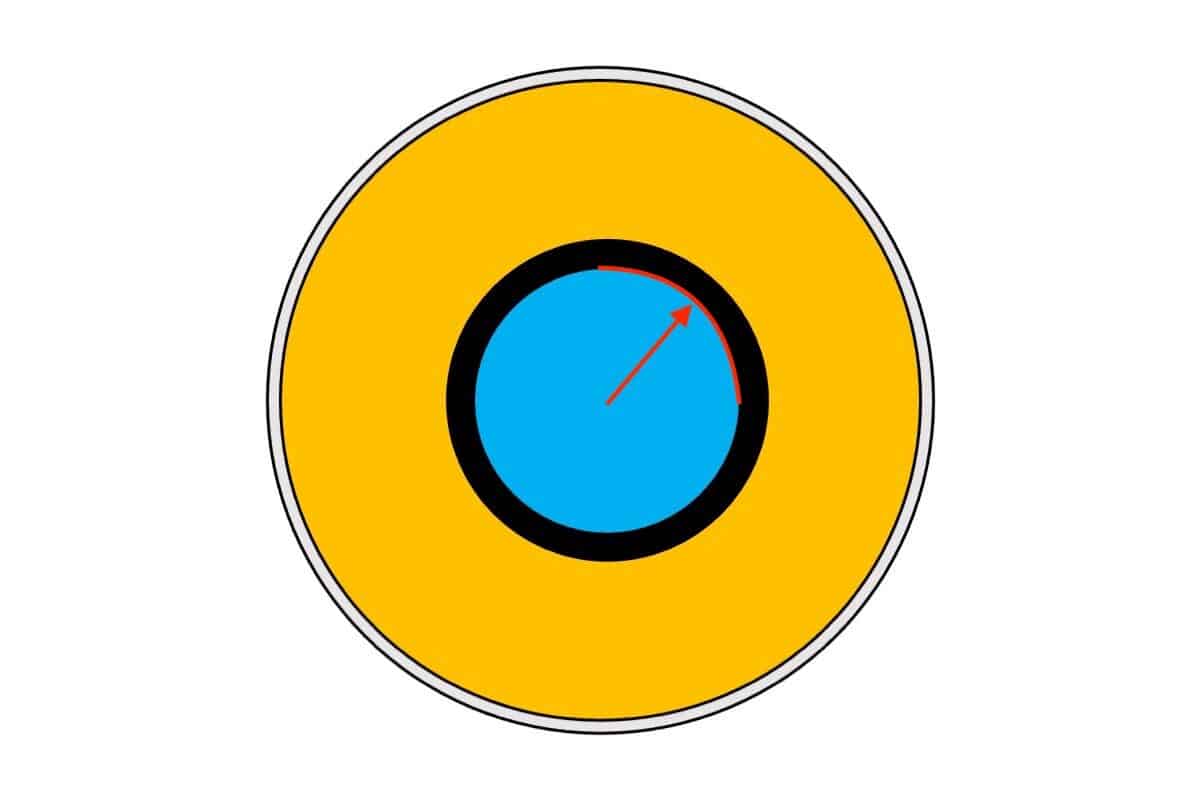
There is a thermal resistance between the chilled water and the chilled water pipe. So, use the following formula to calculate the convection resistance:
RCHW = 1 ÷ [(2)(π)(r1)(L)(hwater)]
RCHW = 1 ÷ [(2)(3.142)(0.025)(1)(2250)]
RCHW = 2.829 x 10-3 K/W
2. Calculate the thermal resistance of the chilled water pipe
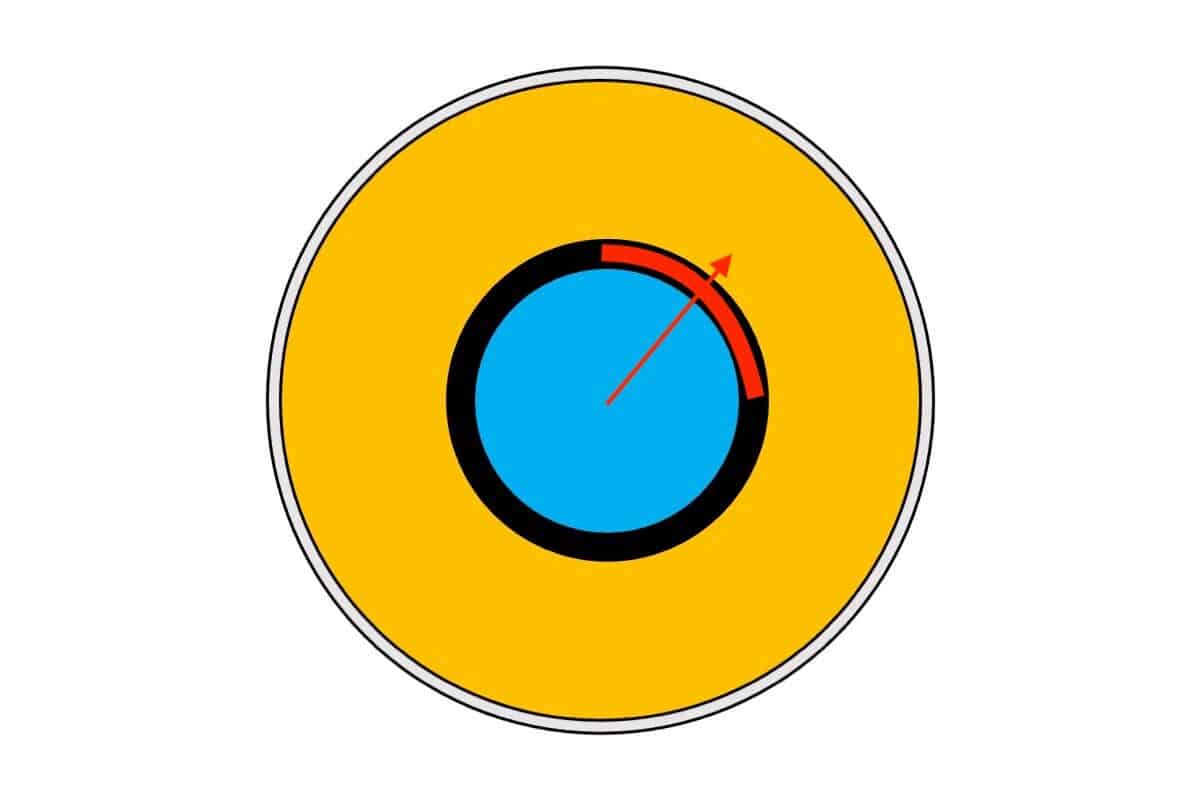
Most chilled water pipes are made of carbon steel and they have thermal resistance. So, use the following formula to calculate the thermal resistance of the chilled water pipe:
RCS = [ln (r2/r1)] ÷ [(2)(π)(kCS)(L)]
RCS = [ln (0.0301/0.025)] ÷ [(2)(3.142)(45)(1)]
RCS = 6.565 x 10-4 K/W
3. Calculate the thermal resistance of the polyurethane foam
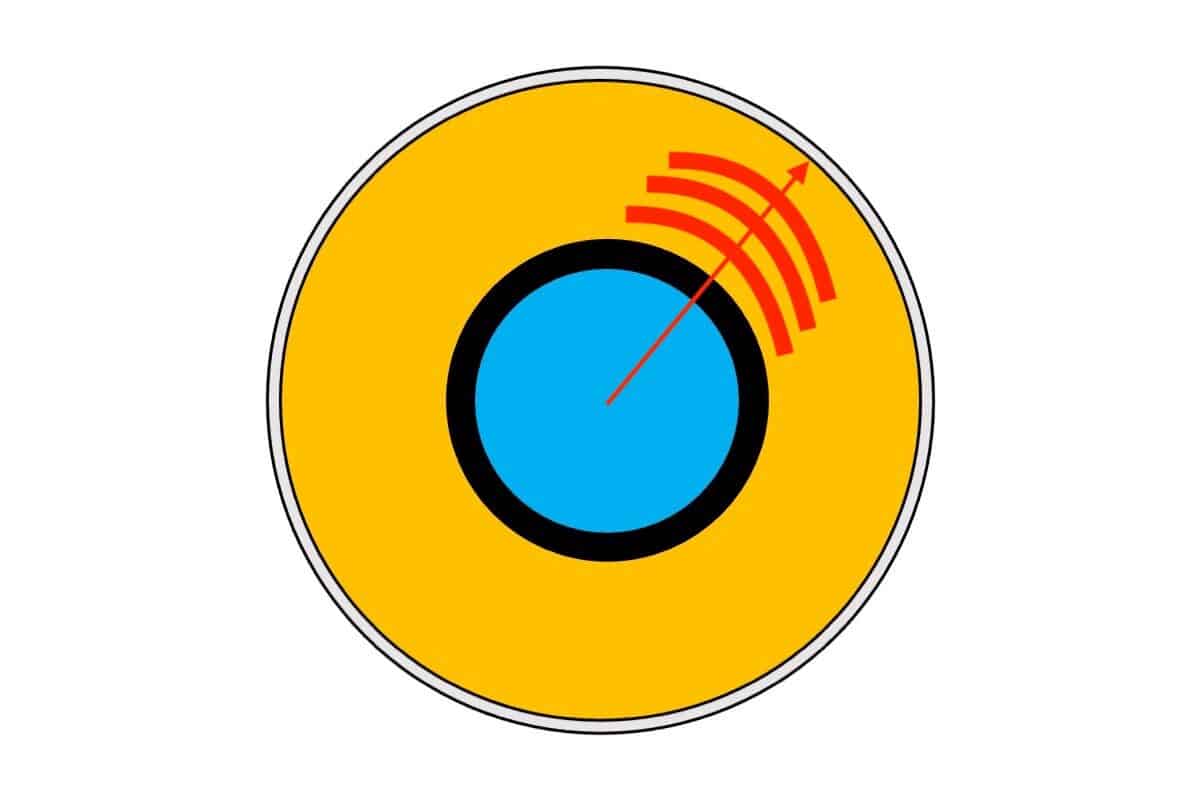
After the chilled water pipe, there is a thick layer of polyurethane foam which is the thermal insulator that provides the highest amount of thermal resistance. Calculate it using the same formula for thermal resistance:
RPU = [ln (r3/r2)] ÷ [(2)(π)(kPU)(L)]
RPU = [ln (0.0707/0.0301)] ÷ [(2)(3.142)(0.0201)(1)]
RPU = 6.76 K/W
4. Calculate the thermal resistance of the jacket
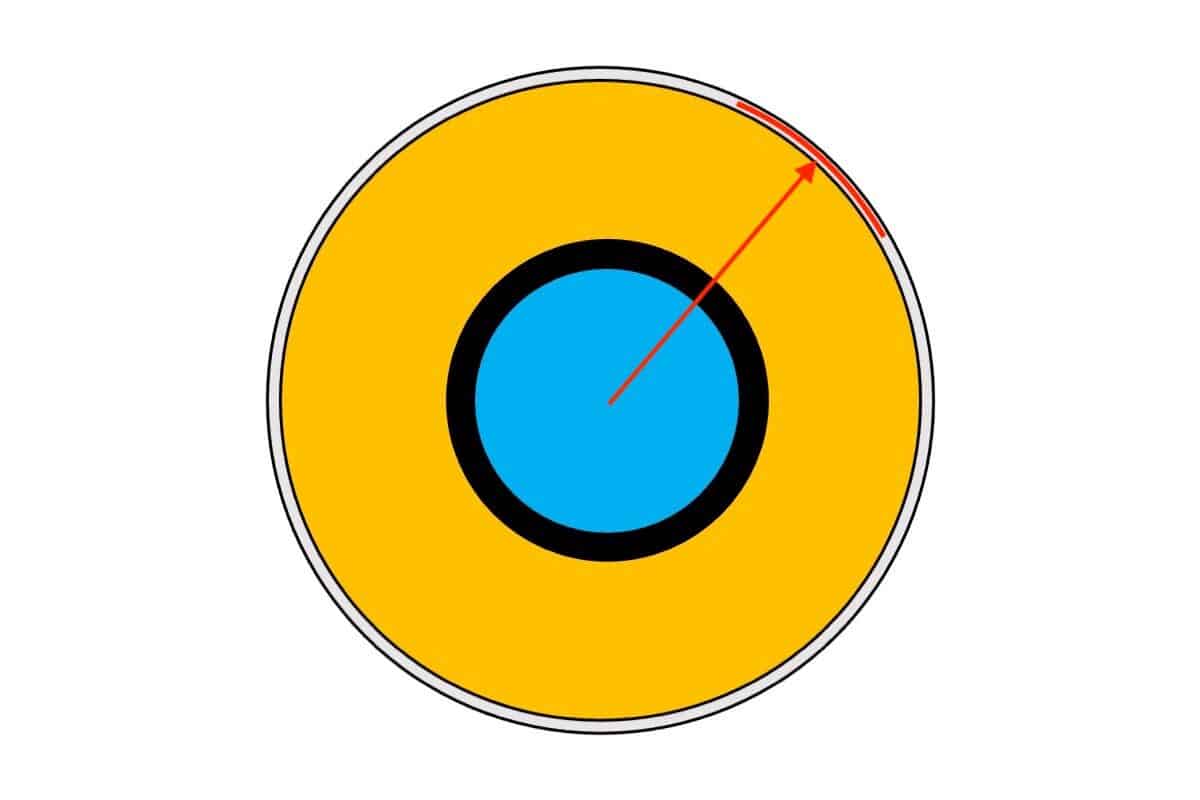
Most people will neglect this step because the impact is insignificant. However, I include it to show you the full calculation process which you can apply to other pipes. Using the same formula again:
RGI = [ln (r4/r3)] ÷ [(2)(π)(kGI)(L)]
RGI = [ln (0.071/0.0707)] ÷ [(2)(3.142)(52)(1)]
RGI = 1.295 x 10-5 K/W
5. Calculate the convection resistance of the air
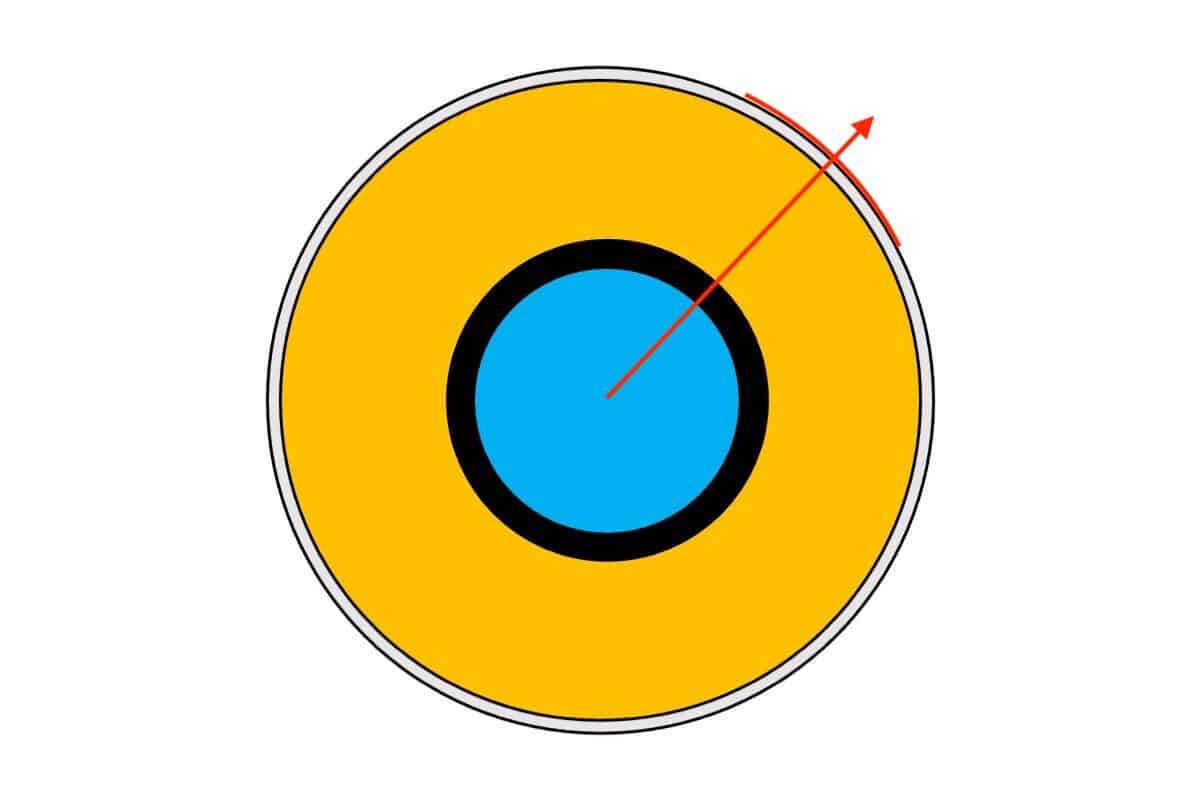
There is a thermal resistance between the outer surface of the chilled water pipe and the ambient air. The greater the surrounding airflow, the greater the thermal resistance. So, for the air:
RAIR = 1 ÷ [(2)(π)(r4)(L)(hair)]
RAIR = 1 ÷ [(2)(3.142)(0.071)(1)(10)]
RAIR = 0.224 K/W
6. Determine the total thermal and convection resistance
Now, let’s sum up the thermal resistance and the convection resistance individually and then, total them all together to prepare for the final equation:
Rthermal = RCS + RPU + RGI = 6.76 K/W
Rconvect = RCHW + RAIR = 0.226 K/W
Rtotal = Rthermal + Rconvect = 6.986 K/W
7. Calculate the outer surface temperature of the chilled water pipe
The last calculation is to determine the outer surface temperature of the chilled water pipe. So, use the formula as follow:
Tsurf = {[(Rthermal x Tamb) + (Rconvect x Tchw)] ÷ Rtotal} – 273.15
Tsurf = {[(6.75 x 303.15) + (0.226 x 279.85)] ÷ 6.986} – 273.15
Tsurf = 28.81°C
Remember to use Kelvin instead of Celsius for this equation.
8. Check for condensation
Now that we have the outer surface temperature of the chilled water pipe, we can cross-check with the dew point to see if condensation will occur.
Given that the dry bulb temperature is 30°C and the relative humidity is 80%, the dew point is 26.2°C.
Since the outer surface temperature of the chilled water pipe is higher than the dew point, condensation is unlikely and the insulation grade and thickness are both appropriate.
Using an excel sheet, you can quickly determine if a given insulation thickness is sufficient to prevent condensation.
Nonetheless, it is still a lengthy process.
However, you can shorten the process by neglecting step 1, step 2 and step 4 as they don’t contribute much to the final result. But, pay attention to these steps when you’re calculating for other pipes.
The convection resistance of the air can significantly impact the final result. Hence, computer simulations may be used to obtain a more accurate result.
That’s why we follow the manufacturer’s standard pre-insulated chilled water pipe specification as they’ve done the calculation extensively (assume they do).
So, if you want to know what insulation thickness you need for your chilled water pipes, try to look for the manufacturer’s datasheet. It’ll give you a good idea of the local practices.
Chilled Water Pipe Insulation Thickness Chart (United States)
Using the above calculation process, the required PU insulation thickness for chilled water pipes in countries like the United States can be calculated.
Assume that:
- Chilled water temperature, Tchw is 6.7°C (44°F).
- Insulation thermal conductivity, kPU is 0.021 W/mK.
- Thermal convection coefficient of air, hAIR is 10 W/m2K.
| City | Dew Point | Ambient Air Temperature | Min. PU Insulation Thickness for 80 mm (3″) CHW Pipe |
|---|---|---|---|
| New Orleans, LA | 26.1°C (79°F) | 27.8°C (82°F) | 38 mm (1.5″) |
| Houston, TX | 25.6°C (78°F) | 27.2°C (81°F) | 38 mm (1.5″) |
| Miami, FL | 25.6°C (78°F) | 27.2°C (81°F) | 38 mm (1-1/2″) |
| Tampa, FL | 25.6°C (78°F) | 27.2°C (81°F) | 38 mm (1-1/2″) |
| Savannah, GA | 25.0°C (77°F) | 26.7°C (80°F) | 38 mm (1-1/2″) |
| Norfolk, VA | 24.4°C (76°F) | 26.1°C (79°F) | 38 mm (1-1/2″) |
| San Antonio, TX | 24.4°C (76°F) | 26.1°C (79°F) | 38 mm (1-1/2″) |
| Charlotte, NC | 23.3°C (75°F) | 25.0°C (77°F) | 32 mm (1-1/4″) |
| Honolulu, HI | 23.3°C (74°F) | 25.0°C (77°F) | 32 mm (1-1/4″) |
| Columbus, OH | 22.8°C (73°F) | 24.4°C (76°F) | 38 mm (1-1/2″) |
| Minneapolis, MN | 22.8°C (73°F) | 24.4°C (76°F) | 38 mm (1-1/2″) |
| Seattle, WA | 15.6°C (60°F) | 17.2°C (63°F) | 22 mm (7/8″) |
The above is the minimum PU insulation thickness for 80 mm (3″) chilled water pipes at different city. 80 mm (3″) is a very common chilled water pipe size in commercial buildings.
Notice that they are more or less the same except for Seattle.
Hence, we can say that chilled water pipes in the United States shall use PU insulation with a thickness of 38 mm (1-1/2″) or perhaps, 45 mm (1-3/4″) to be safe.
Other Types of Chilled Water Pipe Insulation
Apart from polyurethane (PU) foam, chilled water pipes can also be insulated using Rockwool or stone wool. Usually, people use Rockwool to insulate chilled water pipes after a repair. I’ve not seen people use Rockwool for the entire chilled water piping system.
Insulating chilled water pipes with PU foams require skilled workers and a PU injecting machine. In other words, it is not easy compared to using Rockwool.
If a chilled water valve needs to be replaced, PU insulation at that section must be scrapped off. When the valve is replaced, some people prefer to use Rockwool to fill the insulation gap quickly.
However, Rockwool is a mineral wool. It is not good against water ingression. Over time, water vapor can cause the Rockwool to shrink which reduces the thickness of the Rockwool and thus, the insulation performance is reduced.
Furthermore, Rockwool has a higher thermal conductivity. For thermal conductivity, the lower the better. So, a thicker Rockwool needs to be used to achieve the same performance as the PU insulation.
Final Thought
As of now, the best insulation material for chilled water pipes is polyurethane. In hot and humid countries, most PU-insulated chilled water pipes have a thickness of around 30 mm to 50 mm depending on the size of the chilled water pipes.
Although we can use mathematical formulas to calculate the insulation thickness for chilled water pipes, it is often better to consult the manufacturers or refer to the pre-insulated chilled water pipe datasheet provided by the manufacturer.
In most cases, chilled water pipes are insulated to prevent surface condensation. Sometimes, the insulation thickness for chilled water pipes may be greater to achieve certain energy efficiency goals.
Nonetheless, the insulation thickness for chilled water pipes varies based on geographical location as different places have different design conditions.
Once again, you can get my Chilled Water System (eBook) to quickly learn more about chilled water system. But, if you want to learn how to design a chilled water system from start to end, I encourage you check out my Chilled Water System Design Course.
Chilled Water System Design Course
Learn how to design a chilled water system with AHU/FCU selection, chiller sizing, cooling tower sizing, pump sizing, piping design, ductwork design and more.
If you have anything to add (or ask) about this topic, leave a comment down below!


